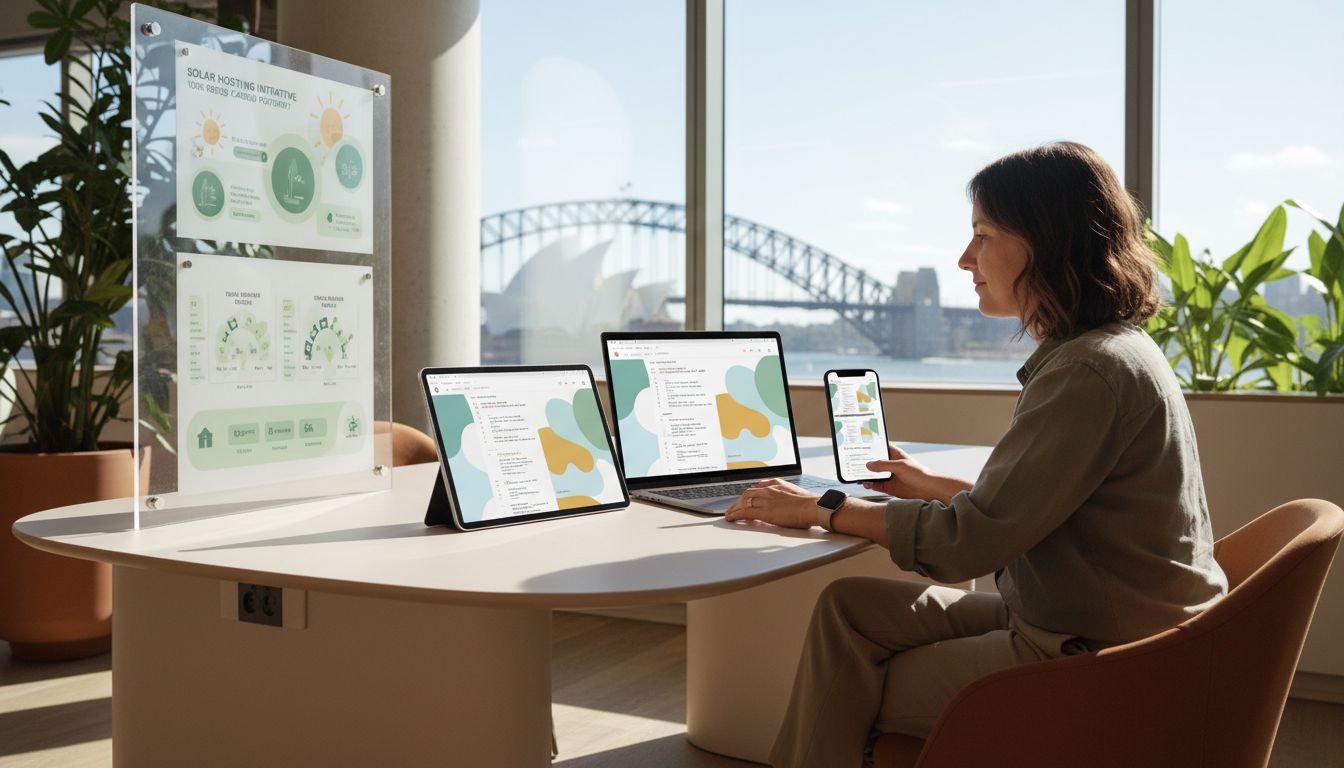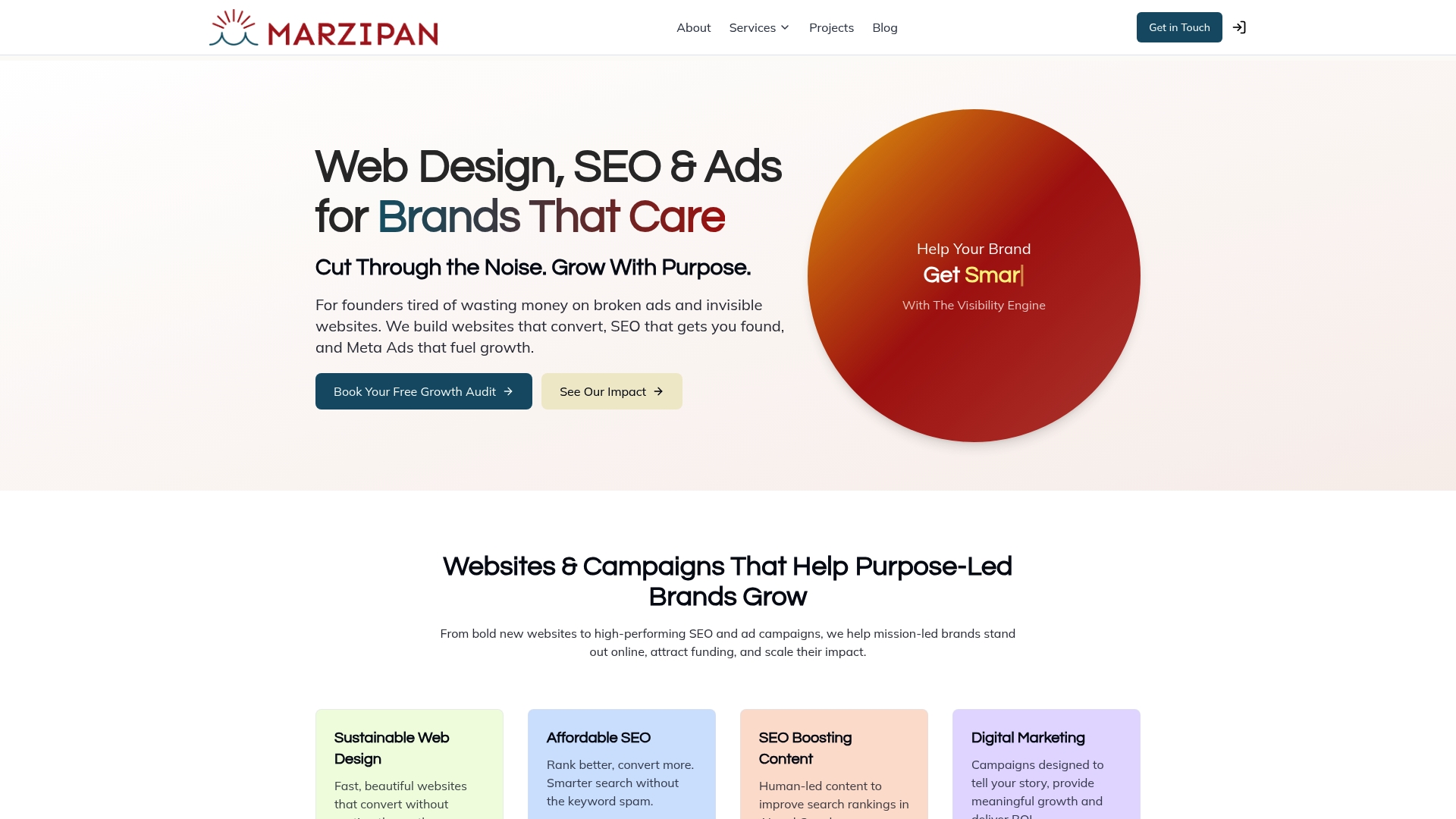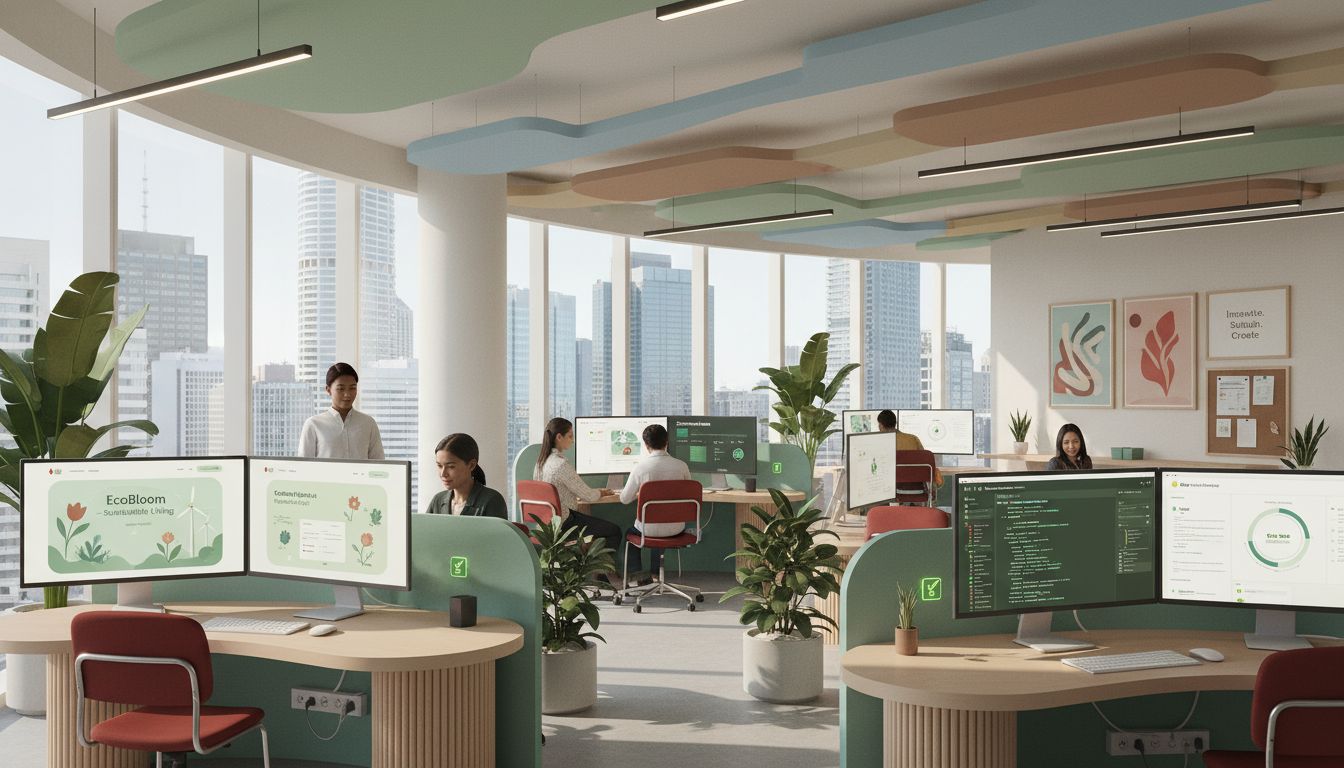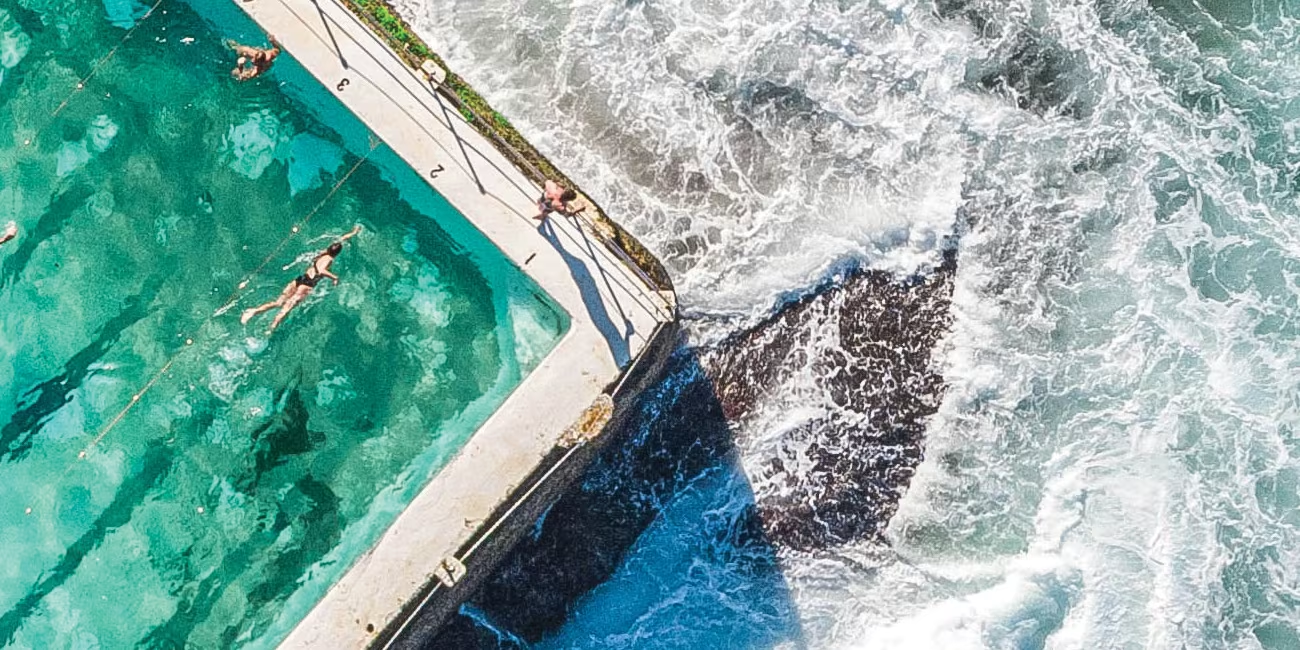Sustainable Web Design: Complete Guide for Sydney
Websites now account for nearly four percent of global carbon emissions, rivalling the entire airline industry. As online activity soars, every webpage loaded comes with an environmental cost that many users never see. Sustainable web design offers a practical way forward by cutting digital waste, shrinking electricity demand, and helping organisations meet growing expectations for responsible technology.
Table of Contents
- Sustainable Web Design Defined
- Variations And Design Strategies
- Core Eco‑Friendly Techniques
- Hosting, Tools And Compliance
- Risks, Costs And Business Impacts
Key Takeaways
| Point | Details |
|---|---|
| Emphasis on Environmental Responsibility | Sustainable web design integrates eco-conscious strategies to reduce carbon footprints throughout the digital production process. |
| Focus on Performance and Efficiency | Key strategies such as image compression and lazy loading enhance website speed while minimizing energy consumption. |
| Importance of Green Hosting and Tools | Selecting renewable energy-powered hosting solutions and using performance monitoring tools are critical for reducing environmental impact. |
| Strategic Business Advantages | Adopting sustainable web practices can lead to cost savings, improved brand reputation, and competitive differentiation in the marketplace. |
Sustainable Web Design Defined
Sustainable web design represents a critical approach to digital development that prioritises environmental responsibility and minimises ecological impact. According to research from Why Sustainability Matters in Web Design, this methodology goes beyond traditional web creation by integrating eco-conscious strategies throughout the entire digital production process.
At its core, sustainable web design aims to reduce the carbon footprint of websites through strategic optimisation. As highlighted by research from Sustainable Web Design Organisation, this approach involves multiple key practices:
- Minimising data transfer and website weight
- Utilising energy-efficient hosting solutions
- Designing with renewable energy considerations
- Implementing clean, lightweight code structures
- Reducing unnecessary computational processes
The environmental implications are significant. Websites consume substantial electricity through data centres, network infrastructure, and end-user device processing. By adopting sustainable design principles, web professionals can dramatically decrease digital carbon emissions. 7 Key Examples of Green Web Design Practices demonstrates how thoughtful design choices can transform digital platforms into more environmentally responsible tools.
Ultimately, sustainable web design represents a holistic approach that balances technological performance with ecological consciousness. It’s not just about creating visually appealing websites, but about crafting digital experiences that respect and protect our planet’s limited resources.
Variations And Design Strategies
Sustainable web design encompasses a diverse range of strategic approaches that transform digital development into an environmentally conscious practice. According to research from Chromatix Web Design, key strategies focus on reducing energy consumption through technical optimisations and intelligent design choices.
The primary design strategies revolve around performance and efficiency. Research from Osky Design highlights several critical techniques:
- Image Compression: Reducing file sizes without compromising visual quality
- Code Minification: Removing unnecessary characters from source code
- Lazy Loading: Loading content only when users scroll to specific sections
- Mobile-First Design: Creating lightweight, responsive interfaces
- Green Hosting: Selecting data centres powered by renewable energy
Implementing these strategies requires a holistic approach to web development. Developers must consider every element’s environmental impact, from server infrastructure to client-side rendering. By adopting lightweight frameworks and prioritising efficient code, web professionals can significantly reduce digital carbon emissions.

Moreover, sustainable design is not just about technical optimisation but also about creating meaningful user experiences. Environmental Website Design – A Guide for Start Ups emphasises that sustainable design should balance ecological responsibility with engaging, functional digital platforms that meet user needs while minimising environmental strain.
Core Eco‑Friendly Techniques
Sustainable web design demands a comprehensive approach to reducing digital environmental impact. While traditional web development focuses primarily on aesthetics and functionality, eco-friendly techniques prioritise minimising carbon emissions and energy consumption throughout the entire digital ecosystem.
Key eco-friendly techniques involve strategic design and development choices that dramatically reduce a website’s environmental footprint:
Here’s a comparison of core eco-friendly techniques and their sustainability benefits:
| Technique | Description | Main Environmental Benefit |
|---|---|---|
| Efficient Code Architecture | Lean, streamlined code | Less processing energy required |
| Green Colour Palette Design | Utilising darker colour schemes | Reduced screen power consumption |
| Lightweight Media Assets | Optimised images and videos | Lower data transfer and emissions |
| Renewable Hosting Solutions | Powered by clean, renewable energy | Decreased carbon footprint |
| Minimalist Design Principles | Prioritising functionality over visual excess | Fewer resources used |
- Efficient Code Architecture: Writing lean, streamlined code that requires minimal processing power
- Green Colour Palette Design: Using darker colour schemes to reduce screen energy consumption
- Lightweight Media Assets: Optimising images and videos to reduce data transfer
- Renewable Hosting Solutions: Selecting data centres powered by clean energy sources
- Minimalist Design Principles: Creating interfaces that prioritise functionality over complex graphics
Implementing these techniques requires a holistic understanding of digital sustainability. Web designers must think beyond visual appeal and consider the computational energy required to render and maintain their digital platforms. Understanding Eco Web Design: Principles and Importance provides deeper insights into how seemingly small design choices can create significant environmental impact.
Ultimately, core eco-friendly techniques transform web design from a purely aesthetic discipline into a responsible practice that respects our planet’s finite resources.
By prioritising efficiency, simplicity, and thoughtful resource management, web professionals can create digital experiences that are both visually compelling and environmentally conscious.
Hosting, Tools And Compliance
Sustainable web hosting represents a critical component of environmentally responsible digital infrastructure. According to research from Sustainable Web Design Organisation, selecting the right hosting provider and performance tools can significantly reduce a website’s carbon footprint.
Key tools for monitoring and improving website sustainability include:
- Website Carbon Calculator: Measuring direct environmental impact
- GTmetrix: Auditing website performance and efficiency
- Lighthouse: Evaluating overall website sustainability metrics
- Ecograder: Assessing ecological design principles
- Green Web Hosting Platforms: Selecting renewable energy-powered servers
Compliance with sustainable web design requires a multifaceted approach. Research from Chromatix Web Design suggests that web professionals must go beyond simple metrics and integrate comprehensive environmental strategies. Eco-Friendly Web Hosting in Australia provides deeper insights into selecting hosting solutions that align with ecological best practices.
Ultimately, hosting, tools, and compliance are interconnected elements of a holistic sustainable web design strategy.
By carefully selecting green hosting providers, leveraging performance measurement tools, and adhering to ecological design principles, web professionals can create digital platforms that minimise environmental impact while maintaining exceptional user experiences.
Risks, Costs And Business Impacts
Sustainable web design is not just an environmental imperative but a strategic business decision with significant financial and reputational implications. According to research from Xugar Web Solutions, adopting eco-friendly digital practices can lead to substantial cost savings and enhanced brand perception.
The potential business impacts span multiple dimensions:
- Reduced Operational Costs: Lower energy consumption and more efficient hosting
- Enhanced Brand Reputation: Attracting environmentally conscious consumers
- Improved Website Performance: Faster loading times and better user experience
- Competitive Differentiation: Standing out in a crowded digital marketplace
- Risk Mitigation: Preparing for future environmental regulations
Research from Osky Design indicates that sustainable web design directly correlates with improved website performance. Businesses that invest in eco-friendly digital infrastructure can expect not just environmental benefits, but tangible economic advantages. Understanding Why Choose Green Hosting for Your Website offers deeper insights into the long-term strategic benefits of sustainable digital practices.
Ultimately, the risks of ignoring sustainable web design are increasingly significant. As consumers become more environmentally aware and regulatory frameworks evolve, businesses that fail to adapt may find themselves at a competitive disadvantage, facing higher costs, reduced customer loyalty, and potential compliance challenges.
Build a Greener Future with Sustainable Web Design Solutions
The challenge of reducing a website’s carbon footprint while maintaining engaging and high-performing digital experiences is real. If you want to minimise data transfer, optimise code, and choose renewable hosting, you are on the path to eco-friendly success. But taking these complex steps alone can feel overwhelming and costly. Sustainable web design is more than a trend – it is an urgent responsibility for mission-led businesses committed to protecting our planet.

At Marzipan, we specialise in crafting fully sustainable websites tailored to your unique vision and environmental goals. Gain the benefits of efficient code architecture, lightweight media, and green hosting without sacrificing user experience or brand impact. Explore how our expert team supports your mission through sustainable website builds combined with powerful meta ads and SEO to amplify your message. Take the essential step to future-proof your business and join the movement for climate-conscious digital innovation now.
Frequently Asked Questions
What is sustainable web design?
Sustainable web design is an approach to digital development that minimizes environmental impact by integrating eco-conscious strategies throughout the web production process. It focuses on reducing carbon footprints through optimized website performance and energy-efficient practices.
What are the key strategies for implementing sustainable web design?
Key strategies include minimizing data transfer and website weight, using energy-efficient hosting solutions, employing clean and lightweight code structures, and designing with renewable energy considerations in mind.
How can I measure the sustainability of my website?
You can use tools like the Website Carbon Calculator to measure direct environmental impact, GTmetrix for auditing performance, and Lighthouse to evaluate overall sustainability metrics.
What are the business benefits of adopting sustainable web design?
Adopting sustainable web design can lead to reduced operational costs, enhanced brand reputation, improved website performance, competitive differentiation, and risk mitigation against future environmental regulations.
Recommended
- Accessibility in Web Design – A guide from Marzipan
- Environmental Website Design – A Guide for Start Ups
- 7 Key Examples of Green Web Design Practices – Marzipan
- What is Web Design? Understanding Its Importance and Functionality – Marzipan
- Best SEO Agencies Sydney – Expert Comparison 2025 – Conceive Frogs
- Understanding SEO Best Practices for Your Business – My Blog







